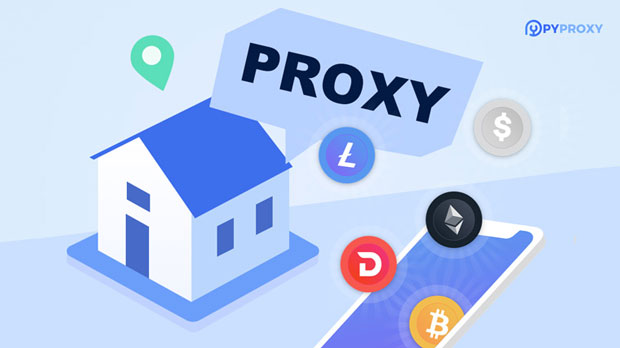High-speed SOCKS5 proxy in cross-border e-commerce business
High-speed socks5 proxies are becoming an essential tool in the world of cross-border e-commerce. Their ability to handle large-scale operations while providing security, anonymity, and fast data transmission makes them an ideal solution for businesses looking to expand their global presence. In this article, we will delve into the various applications of SOCKS5 proxies in cross-border e-commerce, exploring how they improve business efficiency, security, and customer experience. From bypassing geographical restrictions to protecting sensitive data, SOCKS5 proxies offer numerous benefits that are critical in the fast-paced, competitive world of international online trade. Understanding socks5 proxy TechnologyBefore diving into their applications, it's essential to understand what SOCKS5 proxies are and how they work. SOCKS5, or "Socket Secure version 5," is a type of proxy server that routes internet traffic through an intermediary server, masking the user's original IP address. Unlike HTTP or HTTPS proxies, SOCKS5 supports a broader range of traffic, including TCP and UDP protocols, making it more versatile.One of the key advantages of SOCKS5 proxies is their high-speed performance. They are capable of handling large amounts of data efficiently, which is crucial for e-commerce businesses that rely on real-time transactions, customer interactions, and data processing across multiple countries. Moreover, SOCKS5 proxies do not alter the data being transmitted, allowing for a more seamless connection compared to other types of proxies.Role of SOCKS5 Proxies in E-Commerce LogisticsIn the realm of cross-border e-commerce, managing logistics across different regions can be a challenging task. High-speed SOCKS5 proxies play a crucial role in optimizing logistics operations by enabling businesses to access region-specific e-commerce platforms, shipping services, and delivery tracking systems.For example, when a business operates in multiple countries, it might face geographic restrictions that prevent access to local e-commerce tools or logistics platforms. By utilizing SOCKS5 proxies, businesses can bypass these geo-blocks and simulate a local presence in any country, enabling them to access platforms that would otherwise be unavailable. This opens the door to better logistics management, improved shipping options, and optimized delivery times, enhancing customer satisfaction.Enhancing E-Commerce Security with SOCKS5 ProxiesIn cross-border e-commerce, security is a top priority, especially when dealing with sensitive customer data such as payment information, personal addresses, and order details. High-speed SOCKS5 proxies offer a layer of protection by masking the IP address of the user or the business, which helps to prevent cyberattacks such as DDoS (Distributed Denial of Service) attacks or data breaches.Moreover, SOCKS5 proxies allow businesses to implement stricter access controls and monitor the flow of sensitive data between servers and clients. This makes it harder for unauthorized parties to intercept communications or gain access to critical business data. By ensuring secure communication channels, businesses can protect both themselves and their customers, thereby fostering trust and encouraging repeat business.Overcoming Geo-Restrictions in Cross-Border E-CommerceCross-border e-commerce often involves dealing with geo-restrictions, which can be a significant obstacle for businesses looking to expand internationally. Many e-commerce platforms and digital services impose region-based access controls, limiting the ability to reach a global audience. For instance, some payment gateways, shipping services, or online marketplaces might only be available in certain countries, hindering the growth potential of businesses operating across borders.With SOCKS5 proxies, businesses can bypass these geo-restrictions by connecting to servers in different locations around the world. This enables them to access local services, test market conditions, and analyze pricing strategies in different regions without being blocked. For e-commerce businesses, this is a game-changer, as it allows them to tailor their offerings to local markets and increase their competitiveness on a global scale.Improving Product Pricing and Market ResearchMarket research is an integral part of any business strategy, especially for companies operating in international markets. High-speed SOCKS5 proxies are valuable tools for gathering pricing data and conducting competitive analysis in different countries. By masking the business's real IP address and simulating access from different regions, SOCKS5 proxies allow businesses to view local market prices, competitor listings, and trends.This functionality helps businesses understand the pricing strategies of local competitors, adjust their product prices accordingly, and remain competitive in global markets. It also enables them to test their products in different regions, gather customer feedback, and refine their offerings before launching in new markets. Through efficient market research, businesses can ensure they meet local demand and avoid pricing errors that could result in financial losses.Boosting Customer Experience with Faster ConnectionsOne of the main challenges in cross-border e-commerce is ensuring a smooth and fast user experience, particularly for international customers. High-speed SOCKS5 proxies can significantly improve website load times and reduce latency by connecting customers to the nearest proxy server. This is especially important for customers located far from the e-commerce business's main server, as slow connections can result in a poor shopping experience and cart abandonment.By utilizing SOCKS5 proxies, businesses can optimize the browsing experience for international customers, ensuring faster page loads, quicker transactions, and enhanced overall satisfaction. This, in turn, can lead to higher conversion rates, more repeat customers, and better customer retention, which are essential for growing a successful global e-commerce operation.ConclusionIn conclusion, high-speed SOCKS5 proxies offer significant advantages for businesses involved in cross-border e-commerce. From enhancing logistics operations and improving security to overcoming geo-restrictions and optimizing customer experience, SOCKS5 proxies provide an essential tool for navigating the complexities of international trade. By leveraging these proxies, businesses can operate more efficiently, protect sensitive data, and expand their reach into global markets with greater ease. As the e-commerce landscape continues to evolve, SOCKS5 proxies will remain a valuable asset for companies looking to stay competitive in the global marketplace.
2025-01-08

























































